As marketers and business owners, we’re often so focused on getting customers that we forget about the real lifeblood of scale: retention. The average monthly customer churn rate across industries is around 5%. That number doesn’t seem massive on its face, but consider your growth rate. Depending on your business type, 5% customer growth month-over-month is nothing to sneeze at. That means that in order to realize actual revenue from that growth, you would need to keep churn below 5%.
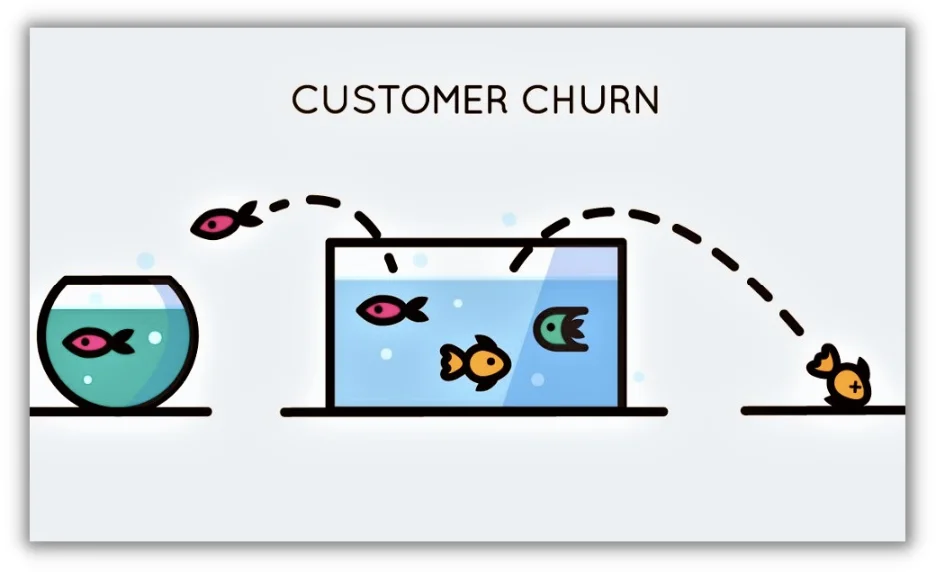
Churn is inevitable, but how do you keep more fish in the tank?
Unless you have strong net new customer growth, your bottom line is going to take a hit if 5% of your business leaves every month. That’s where customer experience comes in. Research shows that 86% of customers are willing to pay more for a better experience. That means that a better customer experience through the funnel can not only help you sell more, it can increase your ASP (average selling price), reduce churn, and even help you upsell satisfied customers.
In this post, we’re going to look at five ways to build a customer experience strategy and improve the customer experience–regardless of what kind of business you own, or what industry you’re in.
Those five strategies are:
- Gather feedback and NPS scores
- Leverage customer surveys
- Personalize every touchpoint
- Cultivate a strong company culture and employee satisfaction
- Educate at every step of the customer journey
Let’s dive in.
What is a customer experience strategy?
Before we dig deeper into the five strategies to improve your customer experience, let’s talk about what a customer experience strategy is.
Customer experience (CX) refers to any engagement a customer has with your business–this includes pre-purchase experiences through marketing channels or touchpoints all the way through post-purchase and retention.
A customer experience strategy is the plan to create a seamless, positive experience for customers across marketing channels and in any way they engage with your business.
5 ways to build a customer experience strategy
Use these tips to build a stand-out customer experience strategy.
1. Gather feedback and NPS scores
Our first actionable strategy to improve customer experience is arguably the most important: gather feedback and NPS scores. It’s nearly impossible to improve your business processes, products, customer service, and marketing without understanding where you stand with your existing customers.
NPS, or Net Promoter Score, is sort of a North Star metric for customer satisfaction. It gauges how likely your customers are to recommend your products or services to their peers (read: get you more business).
NPS is based on a simple survey question: “On a scale of 0 to 10, how likely are you to recommend our company/product/service to a friend or colleague?” Based on the responses, customers are classified into three categories:
- Promoters (score 9-10): These are highly satisfied customers and brand advocates.
- Passives (score 7-8): These are moderately satisfied customers who may or may not recommend your company.
- Detractors (score 0-6): These customers are dissatisfied and unlikely to recommend your company.

Your aggregate NPS score is measured by the percentage of detractors, subtracted from the percentage of promoters. Resulting scores can range from -100 to +100.
What’s a good NPS? The creators of NPS, Bain & Company, say that an NPS score above 0 is good, above 20 is great, and above 50 is amazing. Anywhere above 80 is the top percentile.
NPS is a great benchmark to get a feel for how positive an experience you’re providing for your customers, but it’s just one metric, and it doesn’t give you detailed insight into what needs to change. If you want to go deeper, you need to incorporate customer surveys.
2. Leverage customer surveys
Utilizing surveys can help you identify (and improve upon) both positive and negative trends in your customer service that, ultimately, determine whether or not your customers are satisfied.
Customer experience is too often a one-sided proposition. Between marketing and sales, it’s easy to spend 95%-100% of your time telling customers how they should feel about your business and its products.
Surveys open up a dialogue with your customers and make that proposition two-sided. Crucially, they give customers an anonymous platform through which to provide honest and valuable feedback–without which, it would be extremely difficult to make meaningful optimizations.
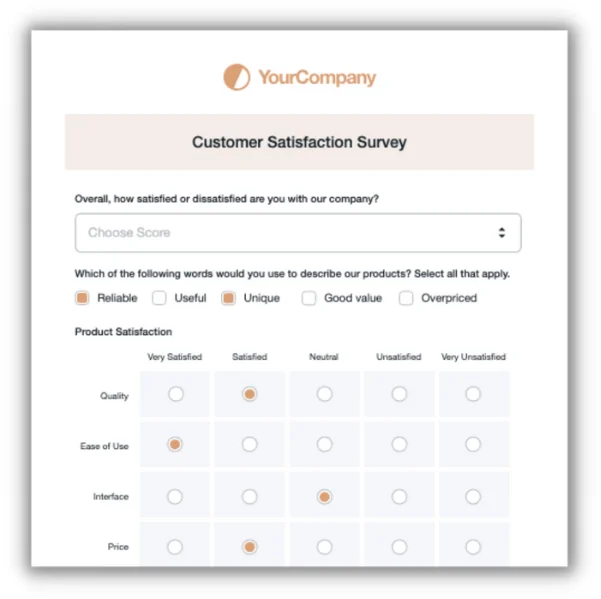
A simple and effective customer satisfaction survey.
Here are a few straightforward ways to leverage customer feedback surveys to solicit feedback:
- Website pop-ups. Use a tool like Hotjar (or any good pop-up tool) to add a simple banner that asks customers what would improve their experience with your website or brand.
- Email surveys. Sending surveys to your customers’ inboxes in the form of a basic email marketing campaign or post-purchase follow-up is a great way to connect directly with customers and ensure strong feedback numbers.
- In-app or in-product surveys. If you’re a SaaS business, or if you have a mobile app, there’s no better way to improve your product than to ask customers in the product what they would like to see more (or less) of.
- Customer service follow-ups. Once issues have been resolved, have your customer service team ask for feedback on their experience.
There’s no wrong way to ask for feedback–the important thing is that you’re consistently giving customers the ability to provide a frank assessment of how well you’re serving them.
3. Personalize every touchpoint
It’s counterintuitive, but so much of customer satisfaction happens before your customer ever tries your product. Yes, it’s the job of your customer service team to assuage concerns that come in after the fact. Yes, it’s the job of your product team to take feedback that comes in and use it to make the product better.
But what about that intro email that you sent to your customer before they purchased when they were still just a newsletter subscriber? Did you use the customer’s name in the subject line? And what about the demo that your inside sales rep ran with them? Did your rep take a deeper look into the customer’s needs and cater the demo around features that they would find useful?
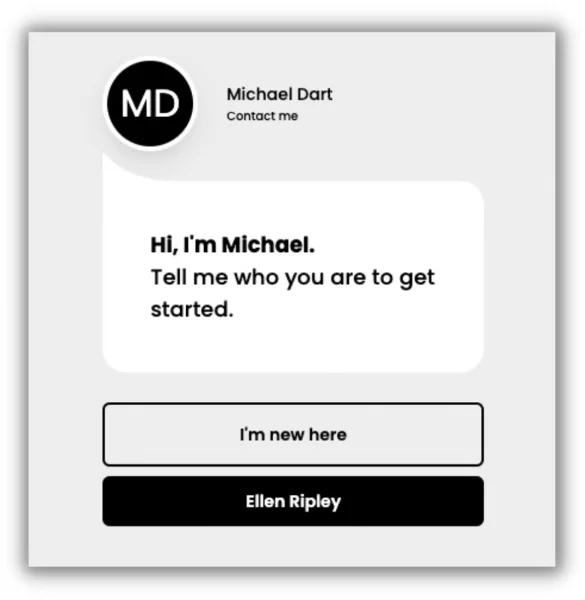
Get to know your customers, and they’ll reward you in the long run.
This is why personalization is so critical. From their first interaction with your brand, customers should feel like you know them and value them. Doing so ensures that your relationship gets off on the right foot, and makes customers feel as if you have their backs–even when things go wrong (and inevitably, they’ll go wrong!).
From your landing pages to your email copy, to the chatbot on your website, your order confirmation emails, and more–if you take the time to personalize each touchpoint in the funnel, your customers will reward you with loyalty and advocacy.
4. Cultivate a strong company culture and employee satisfaction
It can be difficult enough for businesses to look inward and make adjustments based on the feedback they get from customer surveys and NPS scores. But even more difficult is realizing that company culture and employee satisfaction go a very long way in determining how satisfied your customers are going to be and in improving the customer experience.
That’s right–regardless of how many steps you put in place to offer customers the best experience, if your own employees’ experience is wanting, they’re not going to be able to offer the kind of service you need to succeed.
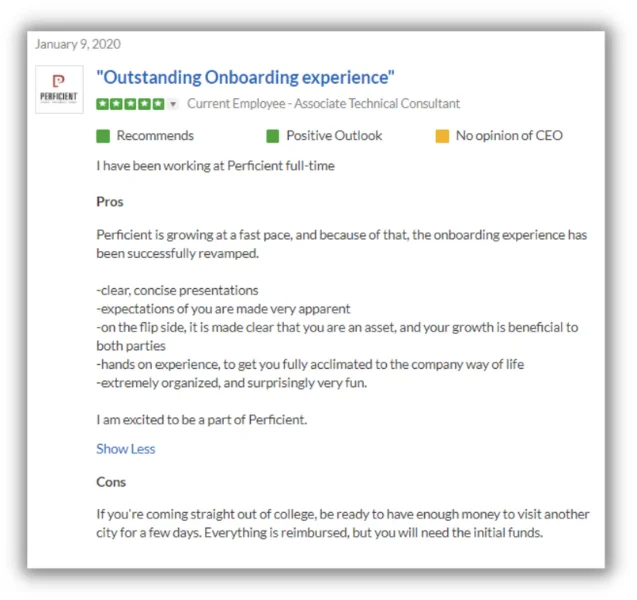
Cultivate strong employee satisfaction, and you’ll get a lot of reviews like this one.
How do you cultivate a strong company culture? Lead by example. Company leaders play a crucial role in shaping and embodying the desired culture. Leaders should consistently demonstrate the values and behaviors they expect from employees. If they make mistakes, they should always own them (rather than passing them down the chain). And if their employees perform positively, they should never hesitate to recognize them.
Also, consider your values. Core values should be clearly defined, continuously harped on, and should align with your mission. Communicating these values to your employees, and ensuring they understand how they relate to their work, will ensure that every customer interaction lives up to the standards you’ve set for the entire organization.
One final way to cultivate a strong culture? Hiring. You can save yourself a lot of trouble by prioritizing candidates who not only have the necessary skills to succeed but also align strongly with your company’s values.
5. Educate at every step of the customer journey
We talked a bit about the importance of personalization at every touchpoint. Similarly, every member of your organization should have an eye on education first when they’re talking to prospects and customers.
Nothing stimulates churn like a customer who bought a product before they were ready, before they knew what they were buying, or before they knew how to properly use said product. Just making a sale is great. But making a customer for life is so much better. And you can ensure that each customer you earn has strong lifetime value by educating at every step of the journey.
Just look at these statistics:
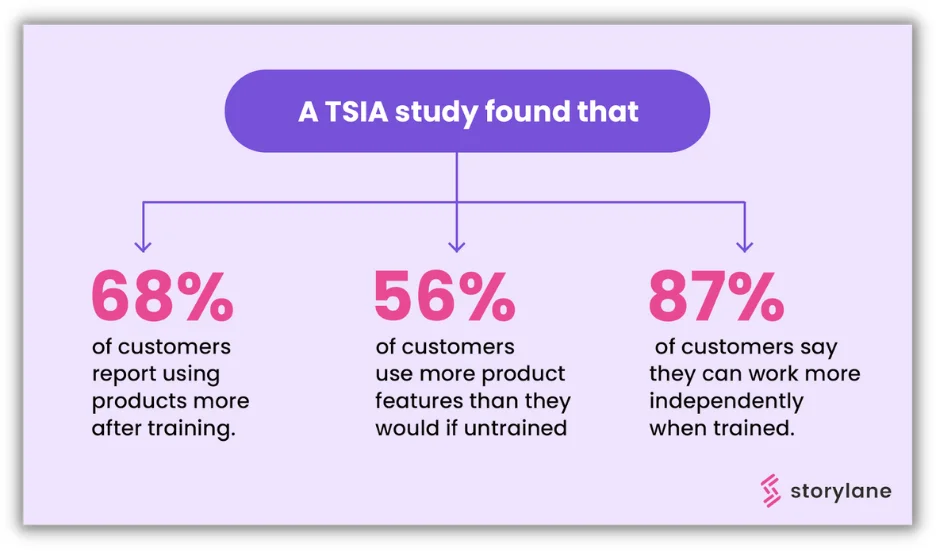
Source
What does product education look like? Take the following examples:
- A thorough blog post that details how your product solves a common problem experienced by your customers.
- An active YouTube channel, support community, or forum that shows customers how to properly use, and troubleshoot problems with, your product.
- A sales team that seeks to educate while they sell, giving prospects personalized and detailed demos that leave the customer confident they can use your product to improve their lives.
- An up-to-date, and prominently displayed list of learning resources on your website.
These are just a few examples, but each goes a long way in nurturing educated prospects and reducing churn. Taken together? That’s a strong recipe for customer satisfaction.
The right customer experience strategy comes down to details
That about does it for this post. If you read back through each of the above strategies, you’ll notice one common thread: effort. So much of customer experience comes down to just putting in the effort to make your customers feel nurtured and understood.
It’s an investment, but if you can make the changes necessary to positively color your customer’s impression of your business, you’ll limit churn, stimulate growth, and put yourself in a great position to scale.




